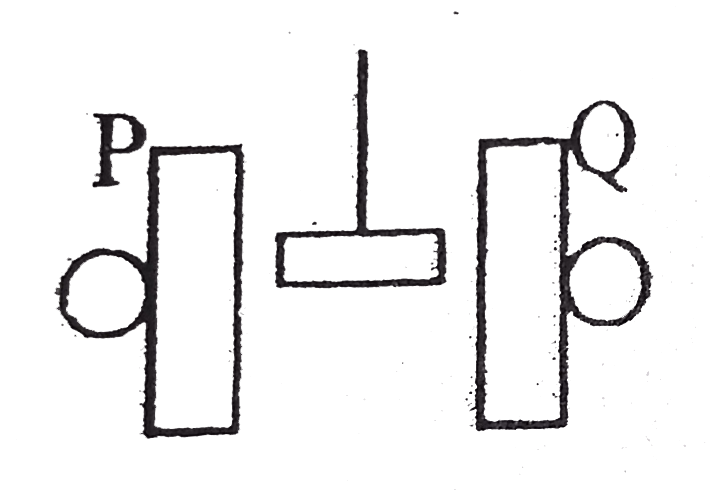Two identical balls of wax are attached on the outer surfaces of two tin sheets. The inner surface of 'P' is coated with lamp black and that of Q is polished. If a source of heat is palced between P and Q then which ball with melt first?

Q ball
P ball
both simultaneously
nothing can be predicted
The correct Answer is:B
P is black so it will abosrb more energy faster.
Topper's Solved these Questions
- BOOK - BANSALCHAPTER - MASTER PRACTICE PROBLEMEXERCISE - Comphrehension134videos
MASTER PRACTICE PROBLEM
- BOOK - BANSALCHAPTER - MASTER PRACTICE PROBLEMEXERCISE - Reasoning75videos
MASTER PRACTICE PROBLEM
- BOOK - BANSALCHAPTER - FLUID MECHANICSEXERCISE - PYQS AIEEE10videos
FLUID MECHANICS
- BOOK - BANSALCHAPTER - SEMICONDUCTORSEXERCISE - CBSE Question32videos
SEMICONDUCTORS
Similar Questions
Consider two concentric conducting spheres. The outer sphere is hollow and initially has a charge −7Q on it. The inner sphere is solid and has a charge +2Q on it.
a. How much charge is on the outer surface and inner surface of the outer sphere.
b. If a wire is connected between the inner and outer sphere, after electrostatic equilibrium is established how much total charge is on the outer sphere? How much charge is on the outer surface and inner surface of the outer sphere? Does the electric field at the surface of the inside sphere change when the wire is connected?
c. We return to original condition in (a). We now connect the outer sphere to ground with a wire and then disconnect it. How much total charge will be on the outer sphere? How much charge will be on the inner surface and outer surface of the outer sphere?View SolutionTwo identical conducting balls A and B have charges- Q and + 3Q respectively. They are brought in contact with each other and then separated by a distance d part. Find the nature of the Coulomb force between them.
View Solution
Knowledge Check
- Question 1 - Select One
Two identical balls are dropped from the same height onto a hard surface, the second ball being released exactly when the first ball bollides with the surface. If the first ball has made two more collisions by the time the second one collides. Then the coefficient of restitution between the ball and the surface satisfies :
Ae>0.5Be=0.5Ce=√3−12De<√3−12 - Question 2 - Select One
Two masses rest on smooth surface as shown in the figure. Force exerted by P on Q is.
 A1.5NB1NC2ND3N
A1.5NB1NC2ND3N - Question 3 - Select One
Two identical balls, each of mass m, are tied with a string and kept on a frictionless surface. Initially, the string is slack. They are given velocities 2u and u. in the same direction. Collision between the balls is perfectly elastic.

After the first collision, what is the total loss in kinetic energy of the balls?A2mu2Bmu2C3mu2Dzero
Two identical conducting balls A and B have charges -Q and +3Q respectively . They are brought in contact with each other and then separated by a distance d apart. Find the nature of the coulumb force between them.
View SolutionTwo identical balls having equal positive charge q coulomb are suspended by two in painting strings of equal length. What would be the effect on the force when a plastic sheet is inserted between the two?
View SolutionTwo metal balls of the same radius a are located in a homongenous poorly conducting medium with resistivity ρ. Find the resistance of the medium between the balls provided that the separation between them is mush greater than the radius of the ball.
View SolutionA solid conducting sphere having a charge Q is surrounded by an uncharged concentric conducting hollow spherical shell. Let the potential difference between the surface of the solid sphere and that of the outer surface of the hollow shell be V. If the shell is now given a charge of −3Q, the new potential difference between the same two surfaces is :
View SolutionA solid conducting sphere, having a charge Q, is surrounded by an uncharged conducting hollow spherical shell. Let the potential difference between the surface of the solid sphere and that of the outer surface of the hollow shell be V. If the shell is now given a charge of -4 Q, the new potential difference between the same two surfaces
View Solution

